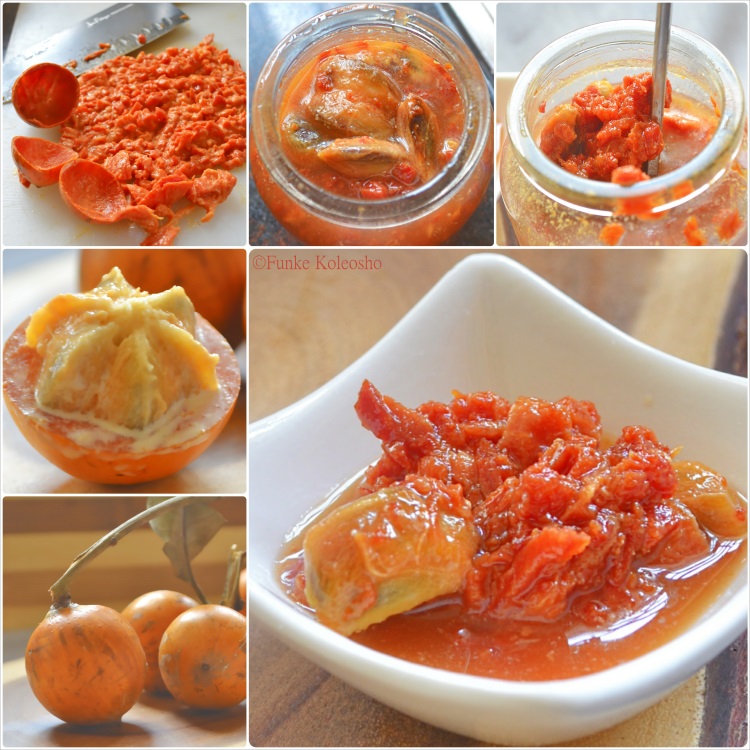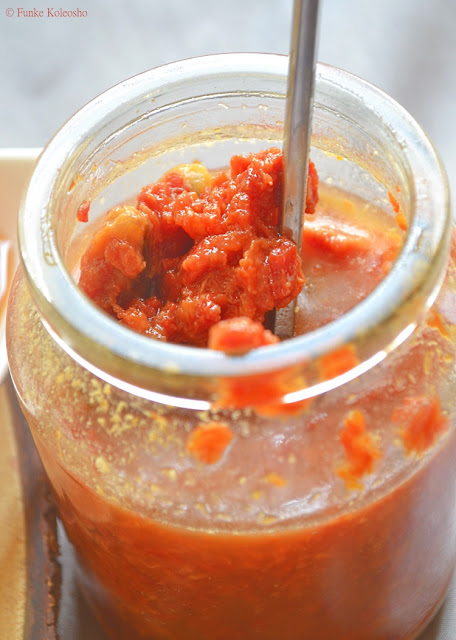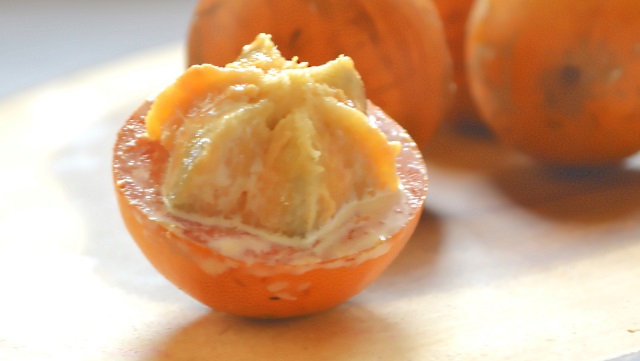I, together with millions of Nigerians and Ghanaians, love the African Star Apple aka agbalomo, udara. The taste and peculiar character of this tropical fruit make it so exciting, you need to try it to understand why its so much loved. (Check out a detailed profile of this fruit from one of my past posts, here.)
Agbalumo is a seasonal fruit, occurring around December through April. When in season, the fruits occur in abundance, and sold on every street corner. However, much of the fruit go to waste...!
As a lover of this special and quite healthy fruit, I long to eat as much as I can during its season, and also wish, I could still get to enjoy some when out of season...if not for the wonderful taste, but also for its nutritional benefits.
Some Interesting Nutritional Facts/Benefits:
- Star apples are a rich source of calcium, with each serving providing up to 10% of the recommended daily allowance (RDA). This fruit also contains good amounts of vitamins A and C (higher, in fact than levels found in oranges or guava). Star apples are also quite rich in iron (a mineral the body needs daily).
- According to a report published by the African Journal of Pharmacy and Pharmacology, the leaves of the star apple tree and to some extent the flesh of the fruit itself, possess some chemical nutrients which have similar properties to insulin found in the body, and believed to effectively reduce blood sugar levels. This property makes the leaves/fruits useful medically, for the treatment of type two diabetes though further research is being carried out.
I often wondered how the African Star Apple acquired its name....simple. From my numerous research into the background of this fruit, I came to the knowledge that the English name by which it is known, emerged from the arrangement of the seeds/pips in the fruit. When cut in half horizontally, the arrangement of the pips is in the shape of a star, hence the name star apple. See picture above.
 |
| Agbalumo, Udara, African Star Apples |
Potential(s) in Food Making
The sweet and tart tastes of agbalumo make it a real contender in the making of desserts in particular. This great taste can also contribute to flavour development in drinks, smoothies, cakes, etc. Agbalumo can be a great substitute for other sweet and sour fruits such as strawberries. If you desire a sweet and sour taste in your recipe, give agbalumo a try. Its all down to creativity.
So I decided to explore ways of preserving this fruit so that I can still enjoy some when out of season. I explored two methods: sun drying and creating preserves.
Sun Drying: This is a really straight forward method, The flesh of the fruit is scooped out and then spread out in the sun to dry, (dries best in temperatures above 30 degrees Celsius) This method results in shriveled pieces of the fruit which can either be re-hydrated before use or used as it is in other recipes particularly for making sweets, desserts or cakes. With this method, the fruit develops an even more intense sour taste.
Macerating: In this method the flesh of the fruit is mixed with sugar and allowed to "mellow" for a couple of days. No boiling is required. The amount of sugar used is quite substantial as this also acts as a preservative agent. The outcome of this process is much better and much versatile. The resulting agbalumo flesh is mellow and sweeter. Some really sweet nectar is also produced which can be used as a sweetener in dessert dishes.
Uses for Agbalumo Preserves
1. Add to smoothies
2. Add to your cakes and pancake recipes
3. Use in drinks, cocktails, mocktails etc
4. Add to ice-creams and other desserts
5. Use to add flavour to yogurts and other frozen desserts
6. Add to jams or use to make jams or compotes
How to make Agbalumo Preserves
What you need
- Lots of African star apples
- Brown sugar (you can use regular sugar as an alternative)
- Sugar syrup (make some by boiling sugar in water until it thickens slightly. Take care not to overcook the syrup as it can burn and turn bitter).
- Cut the fruits open and scoop out the flesh. Chop/mince and transfer into a large jar. Then add some sugar and/or sugar syrup. No cooking or boiling is required.
- Cover jar and store in a cool dry place, preferably in a fridge. Can also be frozen. Best used after a day or two of macerating.
- The taste is divine....
 |
| How to macerate agbalumo |
 |
| Agbalumo preserved in sugar/sugar syrup |

This is so amazing, am hoping to try it this season
ReplyDeletethis writeup has enlightened me
ReplyDeleteNice job!
Good effort on Agbalumo!
ReplyDeleteKudos to Funke Koleosho!
The same Koleosho of Unife?
Omotoye Olorode
Where in the UK can i get the agbalumo syrup
ReplyDelete